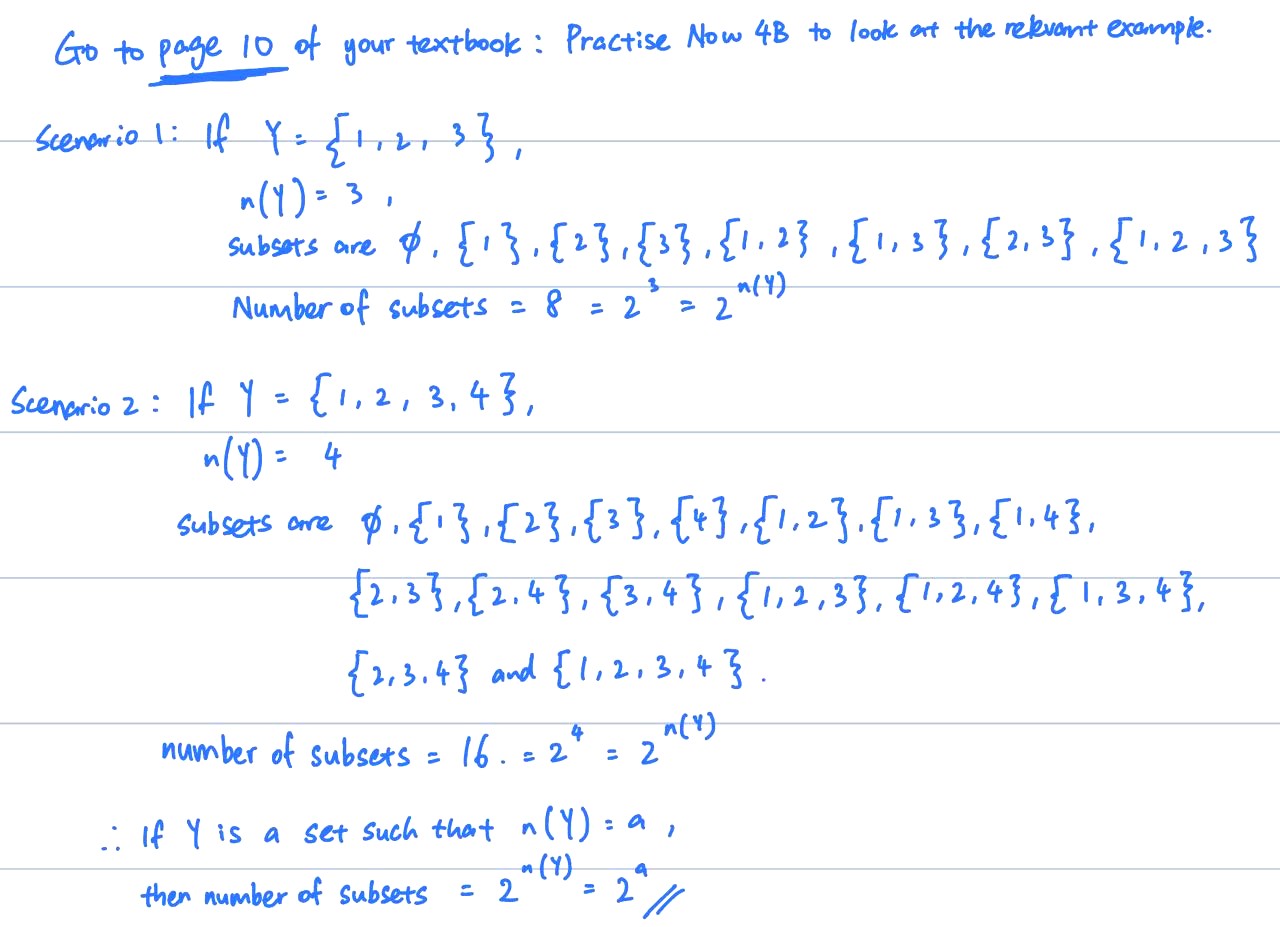Ask Singapore Homework?
Upload a photo of a Singapore homework and someone will email you the solution for free.

Question
secondary 4 | E Maths
One Answer Below
Anyone can contribute an answer, even non-tutors.

Pls help plsss
If n(Y) = 1, there are two possible subsets, a null set and the set itself. Note that 2 = 2^1.
If n(Y) = 2, say Y = {a, b}, there are four possible subsets, a null set, {a}, {b} and {a, b}. Note that 4 = 2^2.
If n(Y) = 3, say Y = (a, b, c}, there are eight possible subsets: 1 of size 0, 3 of size 1, 3 of size 2 and 1 of size 3. Note that 8 = 2^3.
If n(Y) = 4, say Y = {a, b, c, d}, there are 16 possible subsets: 1 of size 0, 4 of size 1, 6 of size 2, 4 of size 3 and 1 of size 1. Note that 16 = 2^4.
Eventually, if you do close analysis, n(Y) = a results in 2^a subsets.
————————————————————
P.S.
There is actually a hidden meaning not covered in the E Maths syllabus regarding this, though this is seen in J2 H2 Maths. You can read up on “Pascal Triangle”. Look that n(Y) = 4 above, you will see I wrote something about 1, 4, 6, 4, 1. Look to see the numbers in the Pascal Triangle and observe something,
See 1 Answer





